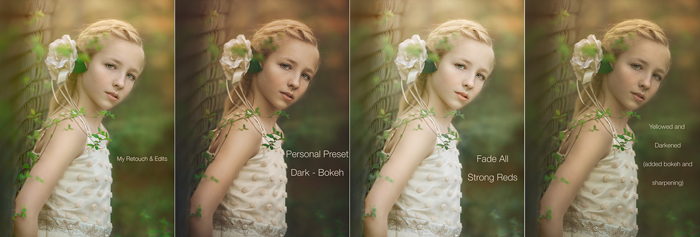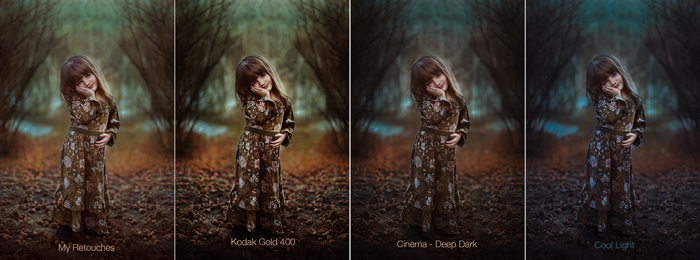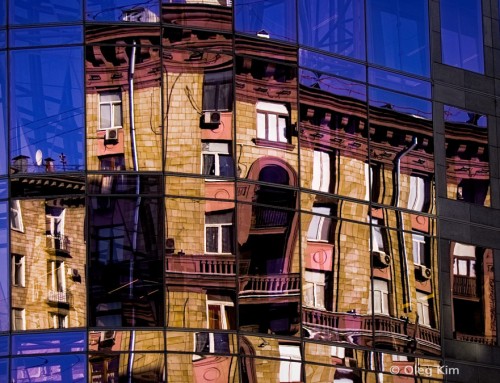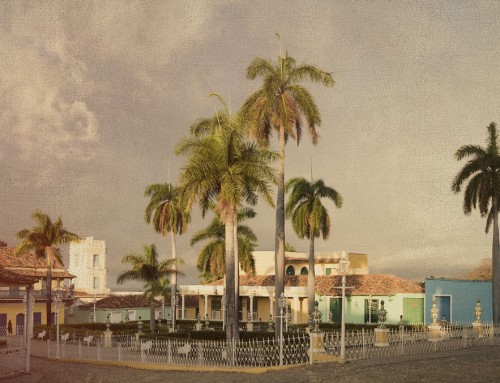Canadian ethereal portrait photographer Nikki Harrison is, above all, an artist. She has an amazing talent with the camera and with retouching, which gives her work a gorgeous, unique style. One of her go-to tools for creating stunning images is Exposure. Specifically, she uses Exposure to bring the warmth and imperfections of analog film looks into her digital work, and to add the missing ingredients that turn a merely “okay” image into one that is stunning.
In her opinion, “Exposure adds something spectacular. It helps me put analog imperfections from film photography into the images I create. I love the film look over the clean, perfect look of digital. I didn’t expect something that I can’t do on my own in Photoshop would play such a huge role in my post processing workflow.”
Exposure provides an extensive selection of tools that can make drastic changes to your photos, as well as subtle finishing touches. Broad controls such as blur, grain, and contrast adjust prominent aspects of the film looks, while adjusting the grain placement and size dial in tiny details.
Exposure is versatile, so it easily works in with many processing workflows. Nikki uses the actions, textures, and overlays that she’s developed for editing with Photoshop along with Exposure. When combined with Nikki’s know-how of Photoshop, she builds up her photos with multiple Exposure treatments. This enables her to bring the warmth and imperfections of analog film to her digital work.

Exposure has a wide selection of preset film looks to choose from. The process above shows Nikki’s editing stages with Exposure from left to right. First she added some darkening with subtle bokeh, then she applied a bright effect that fades all colors other than reds, and the final look is a blend that includes more darkening, more prominent bokeh, and some sharpening. Each one of the steps are strategically made to enhance the shot with magical glow.
Nikki says, “Exposure’s tools give me easy access to my creative vision. As a professional, this is very beneficial. It opens up more possibilities when editing my work, so I can use a higher percentage of the photos I take. On the occasion that I am left with an edited shot that I’m not really feeling, Exposure offers a plethora of film looks to make me fall back in love with it.
Exposure breathes life into these good, but not great photos. Images that have great potential, such as one with a striking pose, or a well-balanced retouch, but have flat, lackluster coloring. These are the kinds of photos that are slam dunks after Exposure. They are easily transformed into the kind of work that I love to make. Because it opens up the possibilities for editing my work, it strengthens me as a photographer.”

Nikki builds up edits to her images in several layers. In the above example, she applied a Kodak Gold film look with boosted clarity. Then she made image darker and bluer by applying the Cinema, Deep Dark preset. As a final step, Nikki brushed the Cool Light effect off of her skin to retain some warmth and life in the little girl.
One example of Exposure’s powerful controls that she commonly uses is sharpening. According to her, “Exposure does sharpening better than anything else. What makes it so good isn’t just the quality of the effect, but that Exposure makes it so easy to use, too.”
So there you have it folks: a glimpse into Nikki’s creative editing workflow, and how she uses Exposure to make her work so special.
Try Exposure Today














Hi Jimmy,
Is Nikki doing all of her layering in Exposure or is she going back and forth between Photoshop and exposure and saving each effect as it’s own layer in Photoshop ? Thanks. Darren.
Hi Darren!
Nikki uses Photoshop layers for the bulk of her workflow. She uses masking in Exposure to remove effects from specific areas of her images, though.
Thanks for your reply Jimmy.
Hi Jimmy
Do you have a tutorial on here, where it shows joining a few presets together. Where you can add more creativity to an image.
Thanks Allan
Hi Allan,
I think we do. Take a look at the layer stacking video. It demonstrates how to build up several effects on a single image in Exposure.